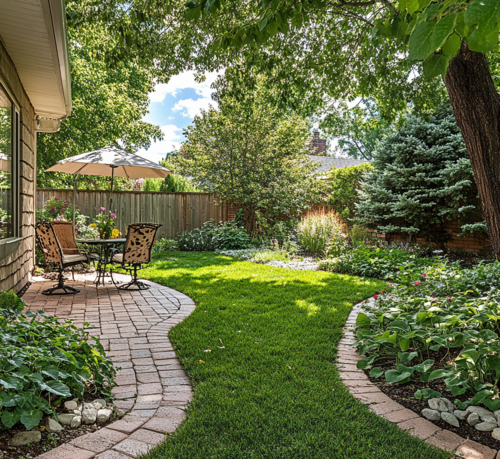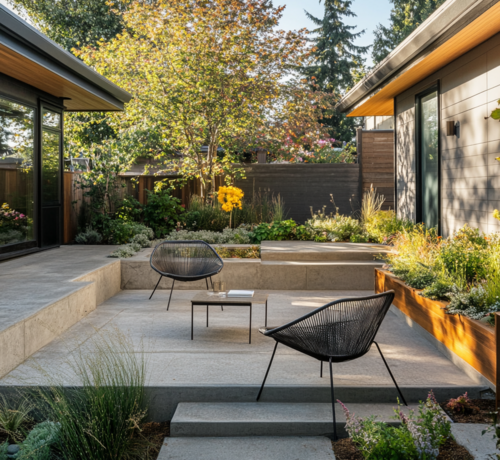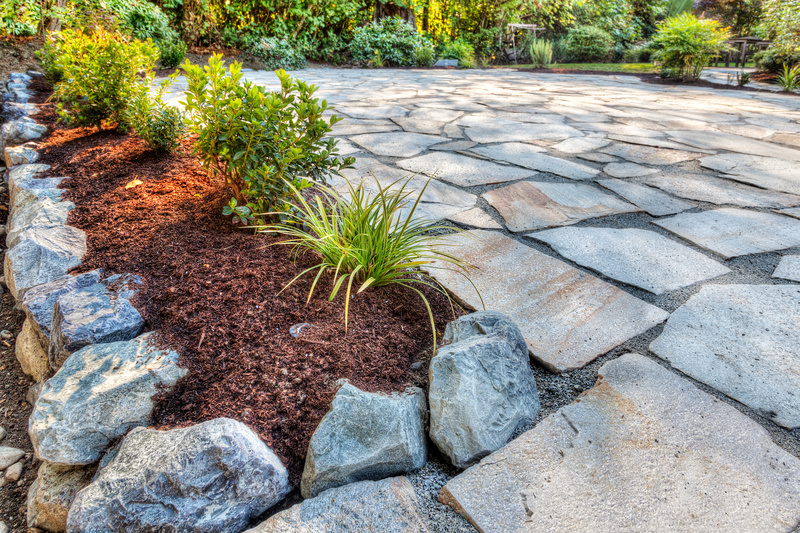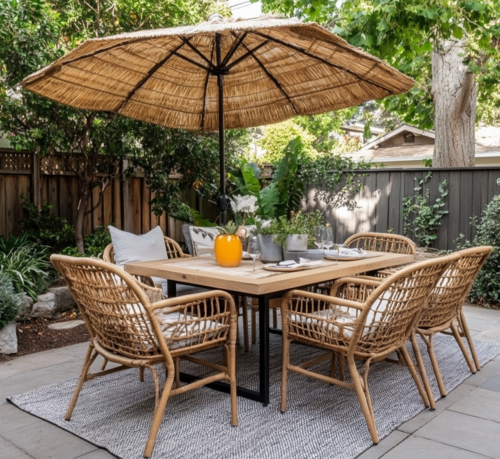What to Consider Before Designing Your Backyard Patio
Introduction
Adding a patio to your backyard can transform your outdoor space into a stylish and functional area for relaxation, entertaining guests , and enhancing your property’s aesthetics. However, designing a patio requires careful planning to ensure it meets your needs and complements your landscaping.
In this guide, we’ll explore everything you need to consider before designing your patio, from materials and styles to practical features. Whether you’re starting from scratch or upgrading an existing patio, these tips will help you make informed decisions.
What is a Patio?
A patio is an outdoor living space, often connected to the main home but sometimes freestanding. The term “patio” comes from the Spanish word for “backyard” or “garden.”
Patios are versatile and can be constructed from a variety of materials, including stone, concrete, brick, or gravel. Unlike decks, which are typically made of wood and elevated, patios are built directly on the ground.
Patio Materials: Choosing the Best Option for Your Space

A Tranquil Backyard Retreat Featuring a Brick Patio, Vibrant Greenery, and Cozy Shaded Seating
Selecting the right material is one of the most critical decisions when designing your patio. Here’s a breakdown of popular patio materials and their pros and cons:
1. Natural Stone
Natural stone is a timeless and elegant option for patios. It offers a range of choices, such as limestone, slate, bluestone, and flagstone.
Benefits:
- Provides a natural, organic look that blends well with outdoor landscaping
- Durable and long-lasting
- Ideal for homes with stone accents to create a cohesive design
Considerations:
- Installation is labor-intensive and can be expensive due to the varying sizes, shapes, and thicknesses of stones.
- May require professional installation for best results.
2. Concrete

A Sleek Concrete Patio with Modern Seating and Lush Landscaping
Concrete is a versatile and cost-effective material for patios.
Benefits:
- Affordable compared to natural stone
- Can be customized with stamped patterns, stains, or dyes to mimic natural materials
- Provides a smooth and even surface, making it ideal for furniture placement
Considerations:
- Requires resealing every 2–3 years to maintain its appearance.
- May crack over time in extreme weather conditions.
3. Pavers
Pavers are manufactured stones designed to replicate the look of natural materials while offering uniformity.
Benefits:
- Easier to install than natural stone due to consistent shapes and sizes
- Available in various colors, patterns, and designs
- Can be installed as a DIY project or by a professional
Considerations:
- Costs can vary depending on the quality and design of the pavers.
- Weeds can grow between pavers if not sealed properly.
4. Brick
Brick patios offer a classic, vintage aesthetic.
Benefits:
- Timeless appearance that complements traditional and rustic homes
- Uniform size and shape make installation easier than natural stone
Considerations:
- Porous material can crack in freezing temperatures, requiring regular maintenance.
- Moss and algae may grow on bricks, particularly in shaded areas, requiring periodic cleaning with a bleach solution.
Types of Patios: Find the Perfect Design for Your Yard
Choosing the right type of patio design is just as important as selecting the material. Here are some popular patio styles to consider:

A Natural Stone Patio and Rock-Edged Garden Beds
1. Freestanding Patio
A freestanding patio is not attached to your home and works well for larger yards.
Features:
- Can be placed anywhere on your property.
- Often connected to the main house with a garden path or walkway
- Perfect for creating a separate outdoor entertainment area.
2. Wraparound Patio
Similar to a wraparound porch, this patio hugs the sides and back of your home.
Features:
- Extends outdoor living space from multiple rooms
- Can be designed as covered or uncovered, depending on your preferences
- Offers ample space for seating, dining, or lounging.
3. U-Shaped or L-Shaped Patio
These designs provide access from multiple parts of your home.
Features:
- Great for creating a flow between indoor and outdoor spaces
- Offers multiple sections for seating dining, or outdoor kitchens.
- Works well for homes with unique architectural layouts.
4. Multilevel Patio
If your property has a slope or uneven terrain, a multilevel patio can maximize the space.
Features:
- Adds depth and dimension to your backyard.
- Ideal for separating different areas, such as a dining area on one level and a fire pit on another.
- Requires steps or stairs to connect the levels.
What Should Your Patio Consist of?

A Stylish Backyard Patio Featuring a Rattan Dining Set, Thatched Umbrella, and Vibrant Greenery
When designing your patio, think about how you’ll use the space. Here are some features to consider:
1. Outdoor Furniture
Choose comfortable seating, dining tables, and lounge chairs that match your patio’s style and function.
2. Shade and Shelter
Consider adding pergolas, awnings, or umbrellas to provide shade on sunny days. Covered patios can also extend your use into rainy seasons.
3. Lighting
Incorporate outdoor lighting, such as string lights, lanterns , or solar-powered fixtures, to create a cozy atmosphere and improve safety after dark.
4. Water Features
Adding a fountain , pond, or small waterfall can elevate the look and feel of your patio, creating a tranquil ambiance.
5. Fire Elements
A fire pit or outdoor fireplace can make your patio usable year-round while adding a warm and inviting focal point.
How to Choose the Right Patio Design for Your Landscaping
Your patio should complement the size and layout of your yard as well as your home’s architecture. Here are some tips to guide your decision:
- Space Constraints: For smaller yards , opt for a compact design or a freestanding patio to save space.
- Consistency: Match the patio materials and design with your home’s exterior for a seamless look.
- Functionality: Consider how you’ll use the space—entertaining, dining, relaxing—and design accordingly.
Final Thoughts
A well-designed patio can transform your backyard into a functional and stylish oasis. By carefully selecting materials, choosing the right design, and incorporating features that suit your needs, you’ll create an outdoor space you’ll love for years to come.
Whether you’re looking for a freestanding patio, a wraparound design, or a multi-level layout, the possibilities are endless. We hope this guide helps you bring your vision to life!
Originally published on April 11, 2019.
We may receive affiliate compensation for some of the links above at no cost to you if you decide to make a purchase.


